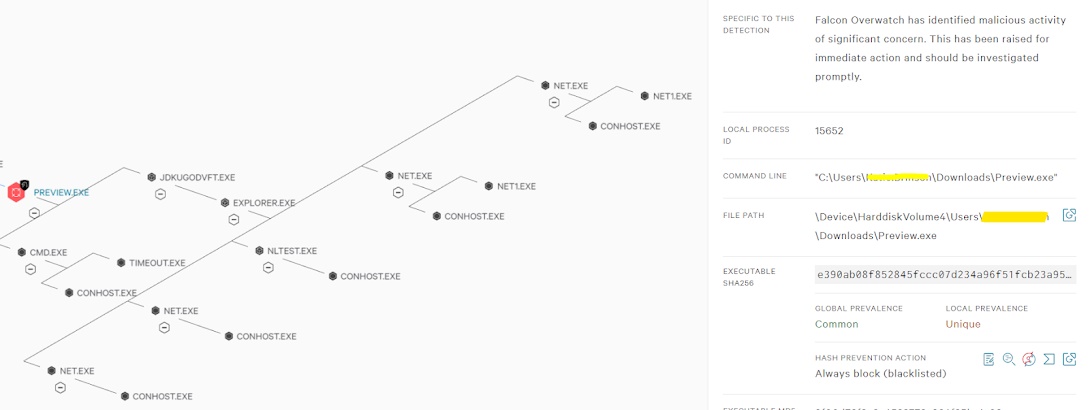Threat Hunting Basics - Part 6
How to be a good Threat hunter
Cyber security threats are constantly evolving and can be difficult to detect, which is why the role of a threat hunter is so important. In this blog post, we'll explore the qualities and skills required for an effective threat hunter, and how they can best use their abilities to protect organizations from cyber attacks.
Positive personality traits
Positive personality traits are essential for threat hunters because they set the tone for how the hunter will approach their work. A good threat hunter is someone who is patient, methodical, and detail-oriented. They are also someone who is able to think outside the box and come up with creative solutions to problems. Finally, a good threat hunter must be able to work well under pressure and maintain a cool head in stressful situations.
Analytical Skills
Analytical skills are critical for threat hunters. They need to be able to understand and analyze data quickly and accurately to identify potential threats. Threat hunters must have strong analytical skills to be successful. They need to understand complex data sets and quickly identify patterns or anomalies that could indicate a threat. They also need to be able to effectively communicate their findings to others on the team.
Strong analytical skills are not only important for identifying potential threats, but also for developing effective countermeasures. Threat hunters need to be able to analyze data about past attacks to determine what was successful and what can be improved upon. This information is critical for developing strategies to prevent future attacks.
Good Communication
Threat hunters must have
good communication skills, so they can clearly transmit information about
threats or, weaknesses to management or security team leaders, along with
recommended steps of action to counteract this.
Enterprise knowledge
Technical Knowledge
In order to be a good threat hunter, it is important to have strong technical knowledge. This includes knowledge of various security tools and techniques, as well as how to use them. Threat hunters need to be able to understand complex data sets and know how to interpret them. They also need to be able to identify patterns and anomalies that may indicate a potential threat. It’s the job of the threat hunter to identify malicious activity and take steps to prevent further attacks or damage. The below sections will illustrate what necessary technical knowledge is required when performing a threat hunt :
1. Programming
There are many different types of programming languages, each designed for a specific purpose. For example, C++ is often used for system-level programming, while Python is more popular for scripting and web development. Java is another versatile language that can be used for a variety of purposes. Knowing at least one programming language will give you a big advantage when it comes to performing a threat hunt. With the right skills, you'll be able to automate repetitive tasks, write your own custom tools, and even reverse engineer malicious code.
2. Networking
Networking is a critical component of any threat hunt. Understanding how to properly configure networking settings and identify common network security issues can help hunters more effectively find and neutralize threats. There are a few key things to keep in mind when it comes to networking during a threat hunt:
-Ensure that all devices on the network are properly configured and secured. This includes making sure that firewalls are enabled and up-to-date, that proper access control measures are in place, and that all devices have the latest security patches installed.
-Monitor network traffic for unusual activity. This can be done using tools like packet sniffers or SIEMs. Keep an eye out for any unexpected connections or communication patterns that could indicate malicious activity.
-Pay attention to changes in network behavior over time. By tracking how the network is being used, hunters can more easily spot changes that could indicate a compromise. For example, if there is suddenly a lot of traffic going to an IP address that wasn’t previously being used, this could be cause for investigation.
3. Digital Forensics and Incident Response
Digital forensics and incident response (DFIR) are critical skills for any security professional. DFIR can be used to identify and investigate malicious activity, as well as to support incident response efforts. Having a strong understanding of digital forensics and incident response will help you in a variety of tasks during a threat hunt, including:
-Identifying indicators of compromise (IOCs)
-Analyzing log files
-Performing malware analysis
-Conducting network forensics
-Creating timelines of activity
-and more!
4. Operating systems and networks knowledge
Operating systems and networks are the backbone of any organization, so it’s critical that threat hunters have a strong understanding of how they work. This knowledge will come in handy when trying to identify anomalous activity and track down malicious actors.
Threat hunters need to know how to use a variety of tools to investigate suspicious activity on networks and computers. They should be familiar with popular operating systems, such as Windows, Linux, and macOS, as well as common networking protocols. Additionally, threat hunters should have a basic understanding of digital forensics and incident response.
By having a strong foundation in operating systems and networks, threat hunters will be better equipped to detect and respond to threats.
5. Information security experience
Information security experience is a great asset to have when conducting a threat hunt. Having this type of experience will allow you to better understand the inner workings of various systems and how they can be exploited. This knowledge can be used to more effectively identify potential threats and vulnerabilities. Furthermore, information security experience can also help you develop creative solutions to counteract these threats.










Comments
Post a Comment